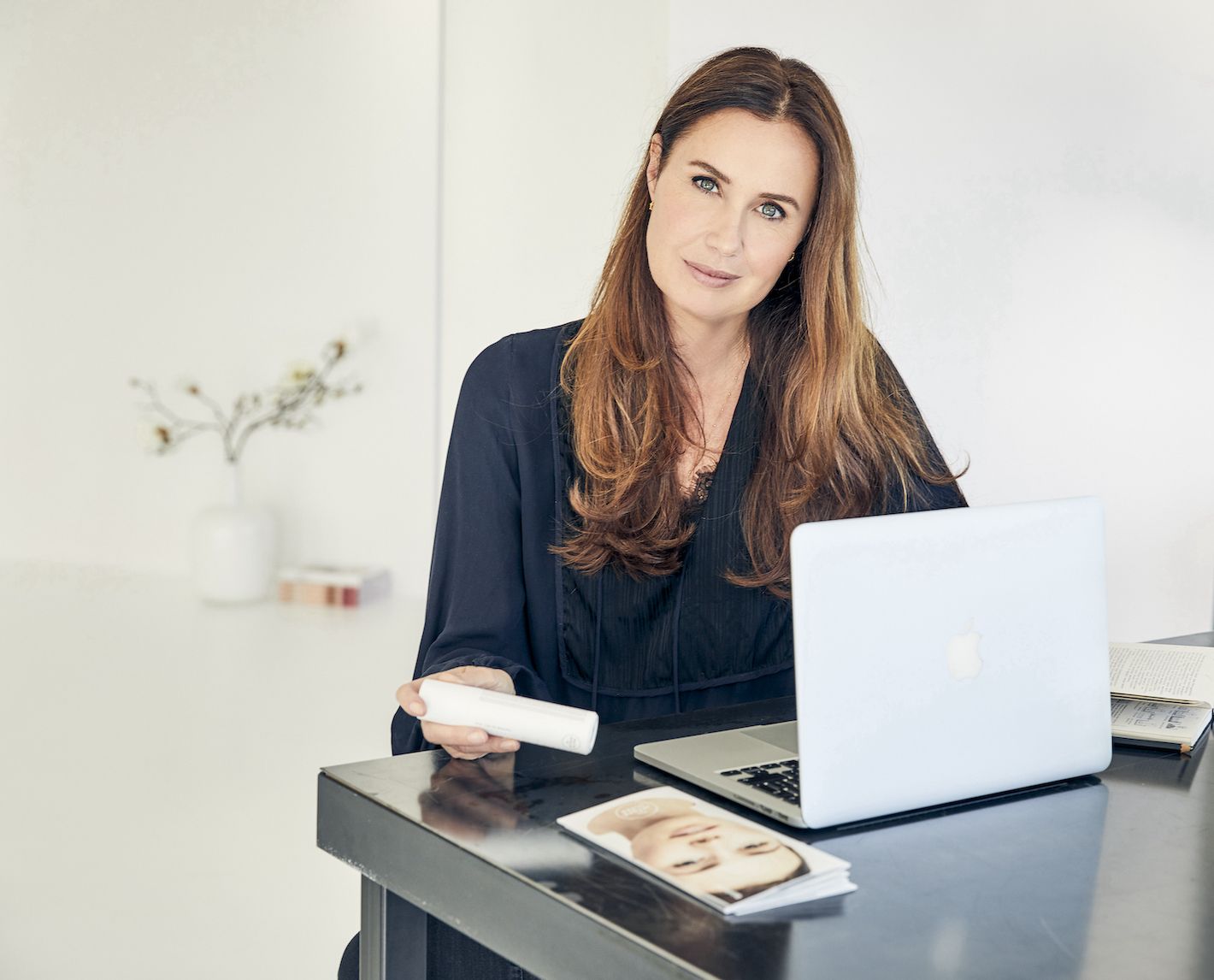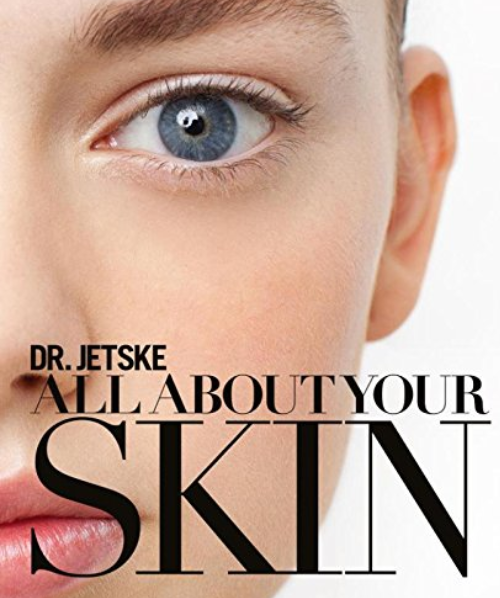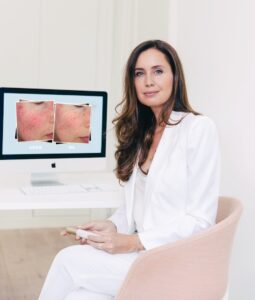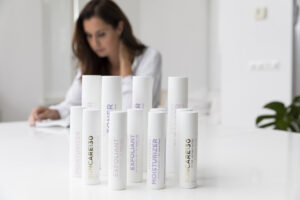Six Beauty Questions about Skin that Affect many Women

As a research doctor in cosmetic dermatology with a Skincare Center in Rotterdam and her own skin care line, Dr. Jetske Ultee has the right answer to every beauty question. Her background: studied medicine at the Erasmus University in Rotterdam, the Netherlands. Then assistant doctor and researcher in the Department of Plastic and Reconstructive Surgery with a doctorate in 2010. Here, Dr. Ultee insightful answers to beauty questions that interest a lot of women:
Beauty question: Can lemon juice really help to lighten pigment spots?
Dr. Ultee: You should be careful with self-treatment tips such as citric acid bleaching. This dries out the skin quickly. Citrus extracts can also cause unsightly stains in combination with sunlight. You can even get blisters or burns. So I advise against it. Here’s what you can do to reduce pigment spots:
CREAM UV PROTECTION AND WEAR A HAT
Few of us have pigment spots on our buttocks. After all, it doesn’t get that much sun. If you want to prevent pigment spots, you need to protect yourself from the sun. Put some good sunscreen on, stay in the shade, and wear a hat on hot days. And it’s really never too late to start using sun protection. Treating the pigment spots, however, makes little sense if nothing is done at the same time to prevent them from worsening.
CHECK THE CONTENTS OF YOUR MAKE-UP CASE AND MEDICINE CABINET
If you are affected by pigment spots, take a critical look at the ingredients of your cosmetic products. In particular, fragrances and plant extracts or oils such as citrus, orange, bergamot, mandarin, grapefruit, lavender and rosemary can promote the development of pigment spots. It is also essential to take a look in the medicine cabinet, because medicines can also cause unsightly stains in combination with sunlight. Taking these tips to heart is important for everyone, whether you have pigment spots or not.
Beauty question: What types of pigment spots are there and can they be treated to disapear?
It is important to find out what kind of stains the person actually has. We doctors differentiate:
Post-inflammatory hyperpigmentation – This type of pigmentation is caused by small injuries to the skin. These can be insect bites, abrasions and acne, for example. In people who are susceptible to this, it can also be caused by irritation after peelings, wax treatments or aggressive cosmetic products. These unsightly pigment spots usually fade by themselves. This process can, however, be supported with soothing substances and antioxidants such as liquorice root, niacinamide, vitamin C or azelaic acid. If they are still visible after a year, laser or peeling treatments can also help.
Age spots – They are caused by sunlight and forms mainly on the areas of skin that are often exposed to the sun (i.e. the face, hands and arms). In contrast to freckles, they are also visible in the winter months. Age spots, which incidentally can also appear at a young age, are generally easy to treat. Skincare with licorice root, azelaic acid, vitamin C, glycolic acid, niacinamide, kojic acid, or vitamin A can help lighten pigment spots. A doctor can also prescribe a (medicinal) cream with azelaic acid or vitamin A acid. If you do not see any improvement from creams, you can do laser or light therapy. The stains are then usually gone forever.
Melasma – This form of hyperpigmentation shows up in dark brown, usually bizarre (symmetrically) shaped spots on the face (often on the forehead, cheekbones, and upper lip). These spots are often difficult to treat. While we know what triggers melasma, we don’t know the exact cause. The sun plays a key role, but hormonal changes such as certain birth control pills, pregnancy, and hormone therapy during menopause can also trigger melasma. And even a wax treatment of the upper lip! Sometimes you are lucky and the spots go away with another pill or after weaning. But that is rather rare. My treatment plan for melasma is almost always a long-term strategy and consists of a combination of different products, medications and lifestyle tips:
- Use sunscreen every day: incredibly important
- Make sure your cream contains vitamin C and niacinamide
- Medicines: azelaic acid and tranexamid acid
- Laser or peeling: see a professional as it can also make melasma worse
- Diet: put plenty of antioxidants on your menu

All About your Skin
In “All about your Skin”* Dr. Jetske Ultee answers all the beauty questions you always wanted to ask. She has poured all her knowledge into this book. It offers a guide into using safe products and even revolutionary ingredients which genuinely do something for your skin. 120 pages, Kindle 9,99 Euro, paper back 13,32 Euro
Beauty question: Is it advisable not to apply cream to the skin at certain intervals in order to maintain natural regeneration?
You’ve heard that creams would make the skin lazy. I understand very well that you are asking whether the skin will then retain its ability to regenerate. However, there is really nothing to suggest that good products make the skin lazy or inactive. In any case, the skin does not produce less sebum if you use a fatty or rich cream. The activity of the sebum glands is influenced by factors such as hormones and diet, among other things, but not directly by a film of fat on the skin. If the cream is too rich, however, the skin can become “overhydrated”. Then certain processes in the skin run less efficiently. But that has not so much to do with the fact that the skin has to get used to the ingredients or the dose used, but with the product you use. Is the moisture balance and sebum production OK? Then opt for a cream with a lighter texture. Especially when your skin is a little drier, particularly hydrating and “closing” substances are suitable, as they ensure that the skin loses less moisture.
Dry skin? If the skin feels dry, it is not a problem to apply lotion more often or to apply a thicker layer. The function of the skin is not impaired. Incidentally, the skin cannot become “immune” to the effects of active substances such as antioxidants or calming substances. I would definitely keep applying them. Because it is precisely these substances that keep the skin in good condition. The active ingredients can protect you from damage caused by free radicals such as those caused by the sun, smoking and air pollution. With increasing age in particular, certain processes run less efficiently, and then the skin can use a little extra external help.
Very oily skin? Then you can only use one toner in the morning (important for the antioxidants) and leave out the moisturizer. I would always apply a cream in the evening. The skin loses a lot of moisture at night, and this layer of cream ensures that less moisture can evaporate from the skin.
Beauty question: How frequent exfoliation can the skin tolerate? Can you also overdo it?
That depends individually on your skin. For some, once a week is very good. For others, it may be better to exfoliate daily. My advice? Gradually increase the application and watch how your skin reacts to it. Here’s how to find out the frequency that’s best for your skin.
Beauty question: Which ingredients are better to avoid with dry skin?
It is important for everyone to avoid irritating ingredients. I definitely avoid skin care products that contain alcohol and perfume. These can severely dry out the skin. There are also less suitable detergents. Does your cleaner foam heavily? Then it is better to switch to a creamy product or an oily cleaner.
Beauty question:: Which ingredients in self-tanners should you avoid?
The substance that causes the skin to tan in self-tanners is DHA (dihydroxyacetone). This reacts with the skin, making it darker in color. It is obtained from sugar beet, sugar cane or fermented glycerine. So it is one of the natural or herbal ingredients. In order for DHA to get well between the dead skin cells, auxiliary substances such as alcohol are sometimes used. Some types of alcohol dissolve the natural oils in the skin’s protective layer, allowing substances to penetrate deeper into the skin. This can cause skin irritation. Avoid products with alcohol denat., SD alcohol, ethanol, methanol, ethyl alcohol and isopropyl alcohol. Your self-tanner should therefore not contain high concentrations of these types of alcohol. How can you control that? Alcohol is then not in the top third of the list of ingredients. It is also best to opt for a fragrance-free product. Check the list of ingredients for “Perfume” or “Fragrance”.
Even if the product does not contain any irritating substances, I advise you not to use a self-tanner for more than a few consecutive days, so that you also give your skin some rest. Better not to overdo it with these products. The active ingredient DHA can also lead to an increased formation of free radicals. It is therefore very important to apply sunscreen very well. Additional antioxidants in skin care products help protect the skin from these free radicals. There are self-tanners that contain antioxidants. But you can also use a cream with additional antioxidants such as niacinamide, vitamin C and / or vitamin E after applying the self-tanner.
There are also a few things to consider when storing a self-tanner. The substance that gives the skin its color is very unstable and does not get along well with heat and high pH. Therefore, store the product in a cool place and ensure that the packaging is opaque. Smell the product before use. If it smells sour, you should stop using it. Use a self-tanner for a maximum of six months after opening.
*This is an affiliated link. You don’t pay more. It is just a little thank you for our team.
Beauty-Fragen, questions beauty

CultureAndCream Author from Munich
To travel during my profession as a beauty journalist was never enough for my. Also my six month on a world trip didn’t do it. It always attracts me to other cities, foreign countries, on roadtrips and places I don’t know yet. But I am not only interested in “culture” and “cream”, I am also fascinated by people who have stories to tell . Such unique experiences I want to share with you.

